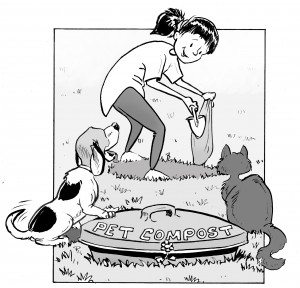The Environmental Impact of Pets

Originally appears in the Spring 2012 issue
Household and classroom pets offer wonderful opportunities for learning important environmental concepts. Every aspect of pet care, from feeding and bathing to playing with a pet, can provide real-world applications of ideas that help students grasp those concepts. Just as importantly, pet care also provides opportunities to demonstrate how to reduce one’s own environmental impact.
This article provides educators of children ages 11-14 with three activities to help them use pets as a heuristic for teaching important concepts. The activities can be used in a traditional classroom but are also well suited for Science/Green Clubs, Pet Clubs, or as an individual project for any pet-loving students in your class.
A recent study revealed that a medium-sized dog has an annual carbon footprint approximately twice the size of a large SUV that has been driven 10,000 kilometers (approximately 6,200 miles). The average household cat, though much smaller, has a yearly carbon footprint the size of a compact car.[i]
To view the photo-rich magazine version, click here.
If you are not already a subscriber, please subscribe to read the full article
Tim Hammerly and Brianna DuMont are full-time writers living in Chicago, Illinois. In addition to writing, Tim has spent six years working with youth as an educator and programmer for The Salvation Army, while Brianna manages a small holistic pet boutique specializing in eco-friendly products for urban dwellers and their furry friends.
Leave a Reply
You must be logged in to post a comment.





